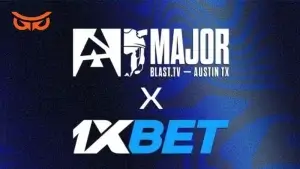While there are many betting options in League of Legends, there’s no denying that most of them revolve around predicting a winner. That’s why being able to predict who is going to win becomes paramount, and the first step to gauging a team’s strength is analyzing stats. Platforms like Oracle’s Elixir offer detailed breakdowns of each player’s performance as well as the combined team statistics.
But it’s not enough to just look at the numbers, you have to know what to look for. So we’ve decided to help you out with the breakdown of the most important stats you should keep track of:
Player Stats
Kills, deaths, assists (KDA)
KDA is the primary method of evaluating player’s impact in the game. Having a high kill, death, assist ratio means that you slay enemy champions way more often that you give up kills, resulting in your team getting more gold and advantages through your play. In a screenshot above, Sneaky has the best KDA among AD carries, making him one of the most impactful players in this position.
Creep score per minute (CSPM)
CSPM stands for creep score per minute. Not all resources have to come from kills, and sometimes something as simple as outfarming your opponents can grant you game-winning advantages. The perfect creep score is around 10.0 CSPM, although it’s very rare for pro players reach these numbers since they’re constantly battling with other pros in the process.
Still, if you see someone having 9.0 or more CSPM, that means they’re doing well for themselves. In a similar fashion, if a pro player falls below 8.0 CSPM, they’re probably not farming that great or spending a lot of their time roaming and helping out other lanes.
Damage per minute & damage share (DPM & DMG%)
Damage per minute and damage share are great stats to evaluate a carry’s performance. Getting your DPM into 500s while keeping your damage share above 25% is a decent indicator of a carry doing his job. For example, Liquid’s Piglet has 529 DPM and 32.1% of the team’s damage share per game, so he’s doing a third of the total damage on a 5-man team. Pretty impressive, although that also likely means that his teammates aren’t pulling their weight.
Gold share (GOLD%)
Of course, DPM and DMG% don’t mean much without accounting for how much resources a player is using. If someone gets a third of the total gold but only has a 25% damage share, his team isn’t getting its money’s worth out of him. On the other hand, it’s always great when a player is taking up fewer resources while keeping up with his peers.
Kill Participation (KP)
How key is a player to his team’s success? Does he take part in teamfights and skirmished or does he prefer to play on his own? A decent kill participation usually hovers around 70%. Keep in mind that junglers, supports, mid laners traditionally have higher kill participation since they’re more likely to roam around the map.
Creep score difference at 10 minutes (CSD10)
If you want to see how good a player’s laning is, there are few better indicators than CSD10. Players that are winning their lanes will always look to deny CS from their opponents either by killing them or by zoning them away from minion waves. That’s why having a positive CSD10 means that you’re winning your lane often while falling into negatives signifies that you’re usually playing from behind.
Team Stats
Even though team stats aren’t as transparent as player stats, there are still a few useful indicators you can keep track of.
Once again, we’ll be using the NA LCS statistics in our examples.
Gold difference at 15 minutes (GD@15)
GD@15 is a good way to determine how far ahead a team usually is at the 15-minute mark. So when EnVyUs have a positive GD@15, you can conclude that they are great at securing early game leads, although their negative win rate means that they struggle to close. In a similar fashion, CLG’s -506 GD@15 signifies that the team has a hard time keeping up with its competition in the early game.
Objective Control Rates
How often does a team take dragons (DRG%)? Does it make Rift Herald (HLD%) a priority? How is its Baron Control (BN%)? While these stats won’t always tell you how good a particular team is, they can be great for objective-oriented bets. Just make sure that your team has a decent amount of games played, otherwise, the stat won’t be accurate. Oh, and keep in mind that winning teams generally have more opportunities to claim objectives.
First Blood rate (FB%)
In a similar fashion, first blood rate is used to determine which team will likely get a first kill of the game. While securing first blood doesn’t necessarily mean that a team has a great early game, it’s a decent indicator of how strong a team’s jungler and—at times—laners are.
Conclusion
If you want to succeed at LoL betting, using stats is absolutely essential. Of course, even the most detailed stat analysis won’t tell you the whole picture. There are dozens of variables that can skew a player’s stats or make teams appear stronger than they really are. We’ll be covering these in another betting guide but for now, understanding stats is a great starting point for your League of Legends betting career.









